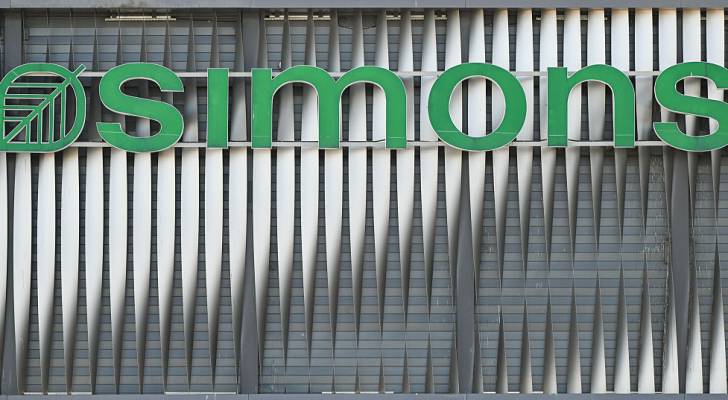New York City renters have one number on their minds right now: zero. That’s how much the leading mayoral candidate, Zohran Mamdani, has promised to raise the rent by for rent-stabilized tenants.
But while everyone else is debating the proposed rent freeze, New York City developers have another magic number on their minds: 99. Under the city’s new 485-x tax program, rental building projects that cross the 100-unit threshold trigger higher wage requirements for construction workers and stricter affordability rules (1). The result? Builders are trimming down their plans and capping projects at 99 apartments to dodge the extra costs.
Must Read
- Thanks to Jeff Bezos, you can now become a landlord for as little as $100 — and no, you don’t have to deal with tenants or fix freezers. Here’s how
- I’m 49 years old and have nothing saved for retirement — what should I do? Don’t panic. Here are 6 of the easiest ways you can catch up (and fast)
- Dave Ramsey warns nearly 50% of Americans are making 1 big Social Security mistake — here’s what it is and 3 simple steps to fix it ASAP
For developers, it’s a savvy move. For renters, desperate for more affordable housing, it’s another setback in a city that is already short on housing options. What was designed to encourage construction of affordable housing and guarantee fair wages is now being gamed with surgical precision. Builders have learned that the path of least resistance — and highest profit — is to stop just shy of 100 units, pocket the tax break, and sidestep the steep labor costs and affordability mandates that kick in above the threshold.
For those who need relief in one of the world’s tightest housing markets, the fallout could be troubling. Developers say more buildings are coming, but they will be smaller and less affordable than the city envisioned, and take longer to go up. The question is whether this regime will leave New Yorkers waiting even longer for the large-scale building that experts say the city needs to solve the housing affordability crisis (2).
What the law requires — and why developers are downsizing
The 485-x program ties generous property tax exemptions to a project’s size, location, and mix of affordable and market-rate units. Modest projects of six to 99 units can receive a 35-year tax exemption — so long as they reserve at least 20% of apartments for households earning, on average, 80% of area median income (AMI). Once a building crosses into the 100-unit category, the demands rise. Those projects can also qualify for a 35-year exemption, but at least 25% of apartments must be affordable, again averaging 80% of AMI. More significantly, construction crews must be paid a minimum of $40 per hour.
The requirements climb again for very large projects of 150 units or more, particularly in central city areas defined as Zone A and Zone B. In these zones, developers can earn up to a 40-year tax exemption, but they must keep at least a quarter of apartments affordable at 60% of AMI, and pay workers up to $63-$72/hour, depending on prevailing union wages (1).
Some builders balk at that combination of regulations. Affordability mandates cut into potential rental revenue, while higher wages increase construction costs. Together, they make projects less attractive to finance. The incentive to scale plans down to 99 units becomes clear: Developers secure the tax break, avoid the higher wage bill, and still deliver some affordable units — just not as many as lawmakers had hoped for.
Will this help or hurt affordability?
NYC is aiming to get housing built quickly and at scale. With rental vacancy rates at historic lows of 1.4% (3) and asking rents hitting eye-watering medians of $4,569 in Manhattan and $3,436 citywide (4), the city is keen to add housing supply across price points.
Mid-sized projects can fill gaps in outer-borough neighborhoods faster; but if too many builders stop at 99, the city risks missing out on the supply gains from larger buildings.
The trade-off is a tricky one. On one hand, 485-x revives a useful tax incentive and locks in affordability permanently, with rent stabilization and marketing rules designed to help keep placements fair. It also aims to lift construction wages on the biggest projects.
Read more: Robert Kiyosaki warns of a ‘Greater Depression’ coming to the US — with millions of Americans going poor. But he says these 2 ‘easy-money’ assets will bring in ‘great wealth’. How to get in now
On the other hand, the increased wage requirements for larger buildings may encourage developers to keep projects under 100 units, reducing the scale needed to bring down rents in a city that needs tens of thousands of additional apartments.
Developers say New York City’s new rules change the entire playbook. Instead of going big, many say they have to think smaller, even if it means delivering fewer apartments.
MaryAnne Gilmartin, founder and CEO of the development firm MAG Partners, told Bloomberg she had originally planned two 400-unit towers for a Manhattan site, but under the new framework, she is considering changing her plans and building six smaller buildings instead — a workaround she claims will cost more and ultimately produce fewer homes.
“We’ll build less housing, less quickly, and it’s less financially viable,” Gilmartin said. “Frankly, we just have less ability to address this housing crisis” (2).
What this means for New Yorkers who need affordable rent
The city requires developers offering below-market units to follow standardized marketing and lottery procedures. Translation: Keep an eye on NYC Housing Connect, the official portal for affordable listings and lotteries (5). It’s where most 485-x units will surface as projects finish. You can even set alerts for your income band and household size.
Checking often is essential because application deadlines are strict and lotteries open and close quickly. Expanding your search to different AMI bands and boroughs can also improve your odds, since mid-sized projects are often offered to households at about 80% of AMI while very large projects skew more affordable, at closer to 60% (1).
If you’re a renter waiting for new housing to come online, you can take a few steps to make sure you’re ready.
Preparing documentation like pay stubs and tax returns ahead of time can prevent delays if your name is drawn. And even as you wait for lotteries, it’s worth watching neighborhood market listings, since lease takeovers and seasonal lulls sometimes produce brief windows of affordability.
What to read next
- How much cash do you plan to keep on hand after you retire? Here are 3 of the biggest reasons you’ll need a substantial stash of savings in retirement
- There’s still a 35% chance of a recession hitting the American economy this year — protect your retirement savings with these 5 essential money moves ASAP
- This tiny hot Costco item has skyrocketed 74% in price in under 2 years — but now the retail giant is restricting purchase. Here’s how to buy the coveted asset in bulk
- Want an extra $1,300,000 when you retire? Dave Ramsey says this 7-step plan ‘works every single time’ to kill debt, get rich in America — and that ‘anyone’ can do it
Join 200,000+ readers and get Moneywise’s best stories and exclusive interviews first — clear insights curated and delivered weekly. Subscribe now.
Article sources
We rely only on vetted sources and credible third-party reporting. For details, see our editorial ethics and guidelines.
NYC Housing Preservation and Development (1); Bloomberg (2); New York City Housing and Vacancy Survey (3); New York City Rental Report 2025Q2 (4); New York City Housing Connect (5)
This article provides information only and should not be construed as advice. It is provided without warranty of any kind.


